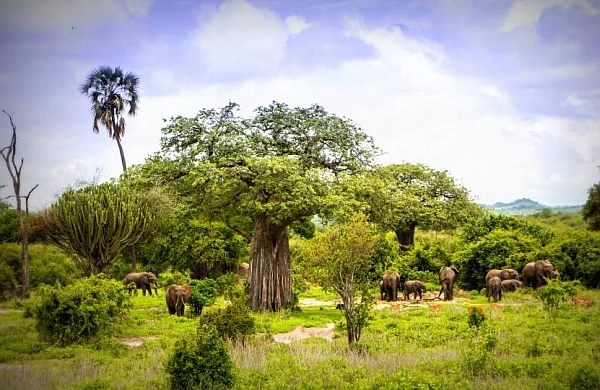Ruaha National Park is a park where your Tanzania Safari can begin the moment the plane touches down. A pair of giraffe may race beside the airstrip, with a line of zebra parading across the runway in their wake as nearby protective elephant mothers guard their young under the shade of a baobab tree.

Now Tanzania & East Africa's largest national park, Ruaha National Park is a remote bastion of spectacular wilderness, undisturbed wildlife, and breathtaking scenery. With herds of more than 10,000 elephants, vast concentrations of buffalo, gazelle, and over 500 bird species,
Game viewing in Ruaha National Park is unrivaled and the scope of wildlife extraordinary, with 80 animal species and 10% of the world’s lion population calling the plains home. Ruaha stands in a unique location, straddling two distinct vegetation zones of Eastern and Southern Africa. In some areas, the miombo woodlands typical of Zambia are dominant, while in others the dry open savanna of Kenya and Tanzania is common. This variation lends itself perfectly to game viewing: leopard can often be found in the thicker woodland while lion and cheetah roam freely on the open plains, and elephant drink from the river.
The density of lions in the park is not only extremely high but prides are unusually large – it is not uncommon to see numbers of 20 or more. Almost 100 of the elusive African wild dog are to be found here, and black-backed jackal and hyena both have strong populations. Also common are buffalo, zebra, giraffe, Greater and Lesser kudu, Lichtenstein’s hartebeest, waterbuck, bushbuck and impala and of course, the 580 recorded species of bird-life. In the height of the dry season, you may see elephants obtain water from dry sand rivers using their front feet and trunks.
If your prime interest is sightings of larger mammals and big cats, the best time to visit Ruaha National Park is the sunny dry season between June and October. As the rivers dry up, more animals congregate around remaining water sources. Of course, the apex predators are never far behind. June is also the Greater kudu breeding season, and so this is a good time to spot males.
The best time for avid birders to visit is during the long rains between February and April, when migrant birds visit the area. The wet season is also when the scenery is most lush and wildflowers are blooming, and the days are at their hottest.
Book your This email address is being protected from spambots. You need JavaScript enabled to view it. now and give us all travel requests so we can offer advice on how best to fit it all in and connections etc.
